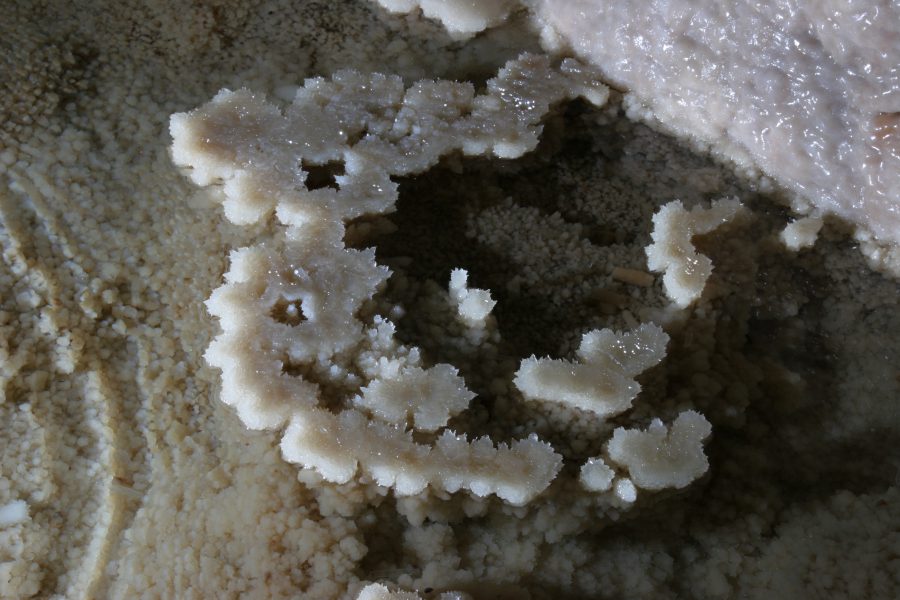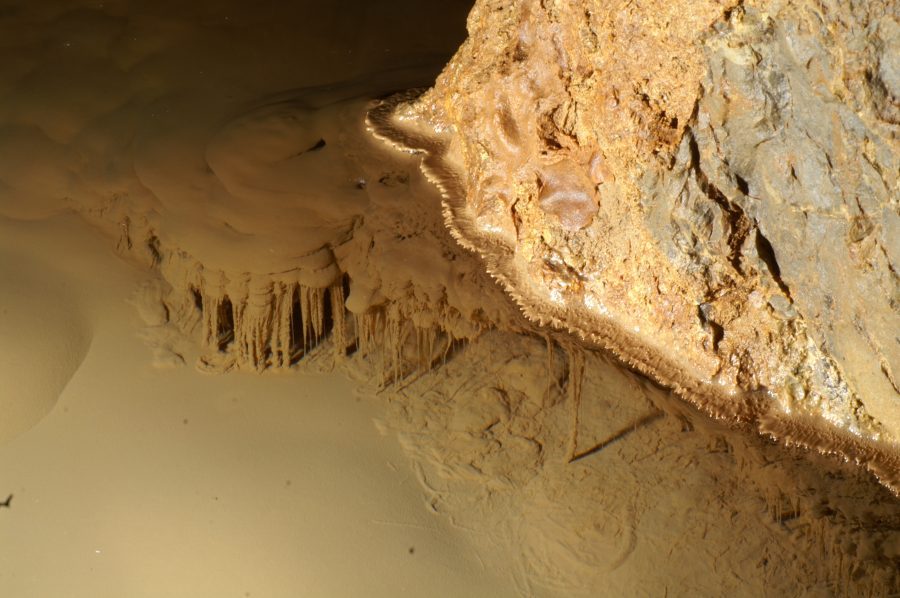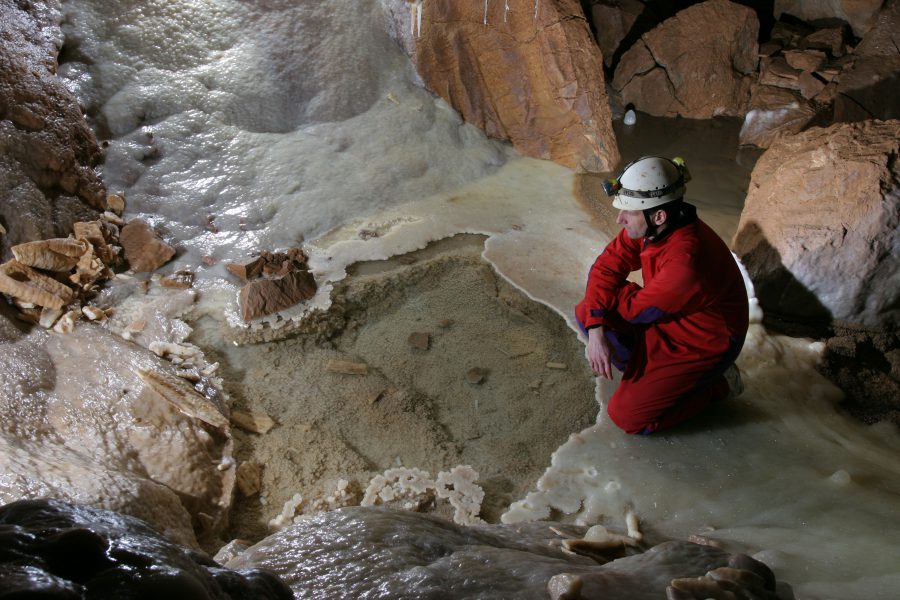Subterranean Ecosystems
An especially fragile habitat, which is hardly noticed by the general public, is found underground. Natural caves and groundwater-dependent ecosystems are harbouring a multitude of species, which essentially require constant environmental conditions. Even small impacts by man can have detrimental effects on the biodiversity of the subterranean habitat, which are irreversible. This can have severe consequences, because caves are a natural access to the karst and ground water system, which is of great importance for the water supply. Impacts by humans may lead to a complete change of natural biofilms, which consist of a multitude of specially adapted microorganisms.
If caves are considered as habitat, then two different large ecosystems have to be distinguished worldwide. For one, there are caves in the temperate climate zones, where, besides eternal darkness and a high humidity, especially constant low temperatures and a scarce food base are exerting a great influence on the population of the subterranean habitat. For another, there are gigantic cave systems in the tropics, which are characterised by constant warm temperatures and an abundant food base.
The natural cycles of material provide food for animals. On the surface, plants are building carbon hydrates through photosynthesis out of sun light, water and CO2. The plants constitute the food of herbivores, which in turn are preyed upon by a chain of predators. Faeces and dead bodies of these are broken down to minerals by decomposers like fungi or bacteria. These minerals are taken up by plants again, which closes the natural cycle. So, how does this cycle work in caves, where plants are lacking?
The only source of organic material here is that which is coming from the surface. It is regularly transported in by water, air and animals. Faeces and dead animals are decomposed here by fungi and bacteria as well, however, the nutrients set free this way are not taken up by plants, but remain in the cave floor. The system is thus not self-reliable, it always depends on the input from outside. If this input is cut, the whole cave ecosystem may break down.
Under natural conditions, plants can't survive in caves, since the sunlight as a source of energy is missing. In show caves, the so-called "lampenflora" may form, a specialised community of species, which is able to thrive on the artificial light as a source of energy. The community consists mainly of algae, mosses or ferns, which prefer shady niches on the surface, and whose spores may be transported into the cave by visitors, water or air currents.
Plants inside the caves are shutting down their photosynthesis over the winter, if the cave is closed to visitors and thus no light available. They are able to survive almost half a year without light. Spore-plants have a different composition of their chlorophyll from flowering plants. It is better adapted to low light conditions and prolonged lack of light, enabling a longer survival in darkness. The most important criteria, however, is the more or less constant high humidity around 100%, even in winter. This offers perfect living conditions to the lampenflora, and thus a widened food base for a multitude of other animals.



